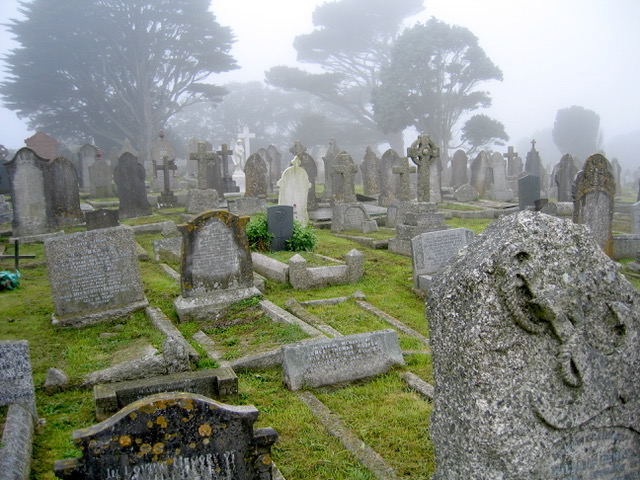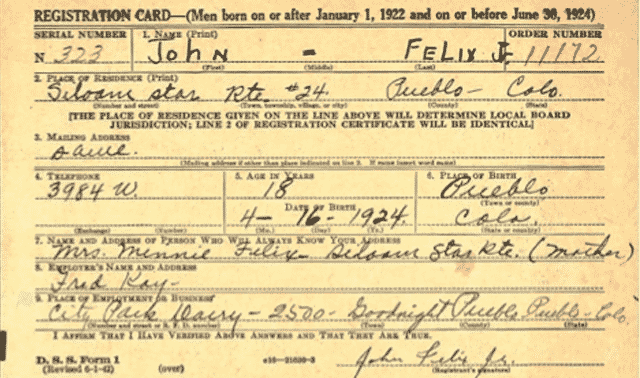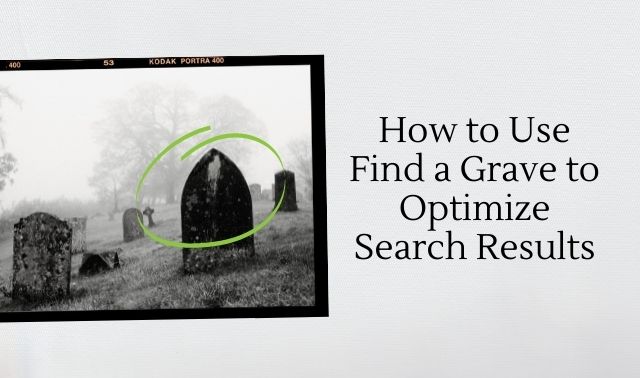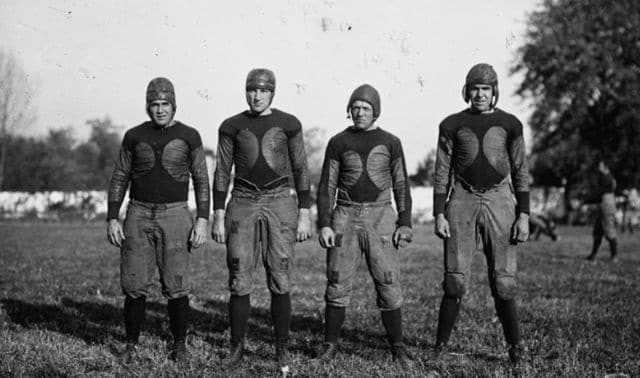Sign up for the Family Tree Newsletter! Plus, you’ll receive our 10 Essential Genealogy Research Forms PDF as a special thank you.
Get Your Free Genealogy Forms
"*" indicates required fields

Three books into his self-published genealogical mystery series, British author Steve Robinson landed a four-book deal with Amazon Publishing’s mystery thriller imprint, Thomas & Mercer.
When we talked with him, Robinson had just released the seventh volume in his popular series starring American professional genealogist Jefferson Tayte. In Letters from the Dead, Tayte sets out to identify his client’s black-sheep ancestor, only to be drawn into a murder investigation that takes him to the Scottish Highlands and India in search of a legendary ruby that’s been missing for generations. Here Robinson shares with us about how he brings his stories to life.
Genealogy mysteries: A new genre
Family Tree: Searching the web, scrolling microfilm and other genealogy tasks don’t look exciting from the outside. How did you overcome this impression for publishers and readers?
Steve Robinson: It was actually the reverse, in that the genealogy angle helped to sell the idea because crime fiction with a professional genealogist as the main character was something new in 2004, when I first began writing In the Blood. To my knowledge, at the time no one else was using family history in fiction in this way—digging up cold cases, solving past and present-day crime mysteries through genealogical research.
The fact that genealogy was experiencing something of a boom, and continues to do so, also helped. So many people the world over are interested in family history, and there I was proposing a series of mystery thrillers, an ever-popular genre, with a protagonist doing all the things genealogists love to do, though perhaps without the element of trouble Jefferson Tayte often finds himself in. It was this new angle for the genre that drew interest from both publishers and readers.

Appealing to non-genealogists
FT: How do you appeal—and explain research intricacies—to non-genealogists among your readers?
SR: Although my books are about a genealogist going about his research, it’s the story that comes first, and that’s as it should be. My books are about people’s lives, past and present, and my job as author is to engage you in their story. There has to be genealogical research, of course, and there’s plenty of it, but I try not to let the story get bogged down in it. The same is true of the vast amounts of historical research required to write each book.
When I’m writing about the genealogical aspects in particular, though, I try to keep the reader interested in what Jefferson Tayte may or may not find, creating intrigue along the way to help keep the pages turning. If something is a bit complicated, it’s explained in the story, such as when Jefferson Tayte talks about ahnentafels in The Last Queen of England, so non-genealogists never struggle. Even genealogists have said in reviews that they picked up a tip or two.
Robinson’s own story
FT: You’ve said that you might one day share the story of your family history. Could you give us a preview?

SR: I was particularly interested in my maternal grandfather. He was an American GI stationed in England during World War II. Very little was known about him, or what happened to him after he left England several years later, leaving my grandmother and their two children behind. I started looking into him while I was writing In the Blood, and I found his US Army enlistment record. From that, I learned more about him and that he was born in Arkansas.
The information proved useful later on when an American amateur genealogist got in touch after reading my books and my author bio, and she offered to help. She discovered that he moved to Los Angeles and died in 1990. He’s buried in the Riverside military cemetery, and I was very grateful for her help, and from one of the members of Find A Grave for taking a photo of his headstone, which, although my mother was never reunited with her father, gave her some comfort just to know where he went and was finally laid to rest.
My second book, To the Grave, was inspired by the story of my grandmother and her American GI, my grandfather. Although the events depicted in the story are, for the most part, entirely imagined, I tried to capture what I’ve come to believe is the essence of what happened with my grandparents, in that secrets can have devastating repercussions.
Everyone has a secret
FT: How do the other genealogical twists and turns Jefferson Tayte encounters reflect your own family history?
SR: Thankfully, very little of what goes on in my books is drawn from my own family history, apart from in To the Grave. It’s drawn more from the notion that every family history has a secret or two waiting to be discovered. I try to imagine those secrets, or find real past secrets, for Jefferson Tayte to uncover, typically while someone is trying to stop him. Genealogy as a means to finding those skeletons in the closet and bringing them to light is the perfect profession for a mystery protagonist to have.
Robinson’s method of writing
FT: Are your plots typically laid out before you begin to write, or do they develop along the way?
SR: I rarely have an entire story plotted before I begin to write, but I like to know how it begins and how it will end before I start. Then I work toward the conclusion, plotting more detail in sections as I go. I always have a general idea, but I like being surprised by the twists and turns my stories take as I write, and I think that can help to surprise the reader, too. After all, if I don’t know what’s going to happen next, how can the reader hope to? In one or two books, I’ve written a character in as the villain only to find toward the end that he was someone else entirely.
FT: What kind of genealogy research do you do in order to make the novels authentic?
SR: I carry out all the research any genealogist would have to do in Jefferson Tayte’s situation. I like to ensure that what I’m asking him to do is both plausible and achievable in the ways I’m describing. Sometimes the time frame has to be shortened to keep the pace of the story going, or he’ll know someone who can get him access to a record faster than is possible in the real world, such as when he’s working with the police, or the FBI in the case of Dying Games. Essentially, whenever Jefferson Tayte needs to find a record of any kind, I do the necessary research to ensure that it can be found just as he finds it.
Jefferson Tayte’s favorite resources
FT: Jefferson Tayte has used the resources of the Chronicling America newspapers site and the B&O Railroad Museum, among others. What are his favorites?
SR: I think that has to be newspaper archives in general. There are few better places to help piece a puzzle together and expand on someone’s life, and Jefferson Tayte has used them to good effect many times. The person you’re looking into has to have been involved in something newsworthy, but then murder usually is, as are the other subjects Jefferson Tayte typically finds himself embroiled in—scandal and most things crime related.
Other than that, the census can of course tell a genealogist a great deal, so he’s keen on that, and he referenced the FIBIS (Families in British India Society) database a number of times in Letters from the Dead, which got him around the potentially difficult problem of checking ships passenger lists during the latter half of the 19th century. [Editor’s note: The British National Archives has incoming passenger lists starting in 1878, but they aren’t indexed by name.]
Robinson’s own favorite resources
FT: What resources do you use for your historical research?
SR: First and foremost has to be the Internet, although it’s important to double-check the facts. I also read books on certain subjects and listen to audiobooks, fiction and nonfiction. It’s rare that I have to visit anywhere in person for historical research. Movies and historical programs on television can also be a good source, particularly when I want to immerse myself in a given time period.
Traveling for the trade
FT: When researching for a book, have you ever traveled to view a setting or to use distant archives?
SR: Yes, I like to visit the places I’m writing about whenever I can, although the Internet is useful. With applications such as Google Earth and Maps Street View, it’s possible to visit areas, visually at least, and “walk” the streets without actually leaving home. I used Street View for much of the action that takes place in Munich for Kindred. I spent a lot of time in Cornwall, where In the Blood is set, and I made a location research trip there to see the churches Jefferson Tayte visits when he’s looking for records. I also visited many of the locations in The Last Queen of England, which is set in London.
Most of my genealogical research for the books is carried out online, largely because there’s now so much information out there, and because it only has to be real for the story, making it less important for me to physically see the records I’m writing about. Jefferson Tayte always prefers to see original documents where possible, aware that transcripts can sometimes contain incorrect information, but that’s less important when it comes to records for the lives of fictional characters, who of course have no real records to see.
Writing nonfiction
FT: Your books are known for being suspenseful, with realistic characters and dialogue. Could you give us some tips on writing a nonfiction family history that non-genealogists would enjoy?
SR: I would probably set out to write it as a work of fiction, even though the people, places and events were real. Life is full of drama, and the drama that presumably makes the nonfiction story worth telling still has to unfold in an engaging way for it to hold any reader’s interest. I think if you’re telling the story of real lives in a family history context, you can still write with suspense and create intrigue in much the same way as any fiction book. The fact that the lives being written about were real people’s lives can surely only serve to make the story more poignant.
My job, of course, is to breathe life into fictional characters, and make their lives seem real. Perhaps the nonfiction writer has something of a head start in that area: To bring a character to life, first it’s important to fully understand the person you’re writing about, whether he or she is real or imagined. Having a good ear for dialogue helps, and I think that’s one of my strengths. Snippets of conversation pop into my head all the time. If it’s something you struggle with, there’s a simple way to get your characters sounding real, and that’s to act out your own scenes, reading all the dialogue aloud. Get someone to do it with you. You’ll soon hear whether a character sounds real.

On self-publishing
FT: What advice would you give aspiring authors considering self-publishing?
SR: Once you’ve finished writing your book, do lots of editing and then do some more. You really can’t edit and proofread a book too much, and it has to be as perfect as it can be. It has to stand up against not only many other self-published books, but also the great many books edited and published by traditional publishers. If you have the means, hire an editor. The same is true for the cover design.
That said, I did all my own editing and designed my own covers initially, although the books had had an agent’s eyes over them and were improved as a result before I published them myself. I had to cut more than 50,000 words from In the Blood, but I’m very glad I didn’t publish the entire 168,000-word tome as it was originally. I was so fond of some of the scenes I had to cut that I’ve put them on my website under the Cut Scenes tab.
Nowadays, I’m fortunate to have a structural editor, who helps me tell the story in the best way it can be told; a copyeditor, who handles all the grammar and consistency from book to book; an army of proofreaders, who make sure the work is error-free before it hits the bookshelves; and a professional cover-design team. It’s quite a list, and if you’re self-publishing, you should expect to spend a lot of time getting your book ready after you’ve written “the end.”
Genealogy mystery in many languages
FT: A Japanese translation of In the Blood recently came out. Have your books been translated into any other languages?
SR: I’m fortunate to find my books also now available in French, Italian, Spanish, German and Czech. Harper Collins published the Japanese edition and I was sent six copies of the book, which are beautiful and small enough to fit in the palm of my hand. I love them. My Czech editions, published by Mystery Press, are also lovely in hardback, each with a different colored silk ribbon for a bookmark. It’s always a special day to receive a new translation, or a new release, in the post.
A possible DNA tie-in?
FT: With the Golden State Killer case highlighting the use of genealogy to solve real-life crimes, will DNA testing make an appearance in a future Jefferson Tayte mystery?
SR: When a fan on my Facebook page drew my attention to the case, my jaw literally dropped. Surely, this was fiction, right? Just like in my books? But no, it was real genealogical sleuthing, and right up Jefferson Tayte’s alley. I honestly wasn’t surprised to read that genealogical research had helped to track down a killer. DNA has been at the forefront of criminal investigation for a while now, and it goes hand in hand with family history. It would be great if the Golden State Killer case boosted awareness of the genre. I’ve hinted at DNA being used to confirm a bloodline in In the Blood, but it’s not yet been used as the central focus. I’m sure there’s scope for it in a future Jefferson Tayte Genealogical Mystery, though. Stay tuned, as they say.
Movie aspirations
FT: A customer review of The Last Queen of England on Amazon says, “I can see this as a movie.” Who would you pick to play the main character?
SR: I run monthly competitions on Facebook to win signed copies of my books, and when I asked this, I received some great suggestions. For Jefferson Tayte, who is tall and heavyset, I think Ben Affleck would be perfect. He has the build to carry it off, and I’ve seen some online images of him in tan suits just like Jefferson Tayte wears. His hair is the same color, too. Ben, if you read this and want to make a movie or seven, do get in touch.
FamilyTreeMagazine.com is a participant in the Amazon Associates Program, an affiliate advertising program. It provides a means for this site to earn advertising fees, by advertising and linking to Amazon and affiliated websites.







